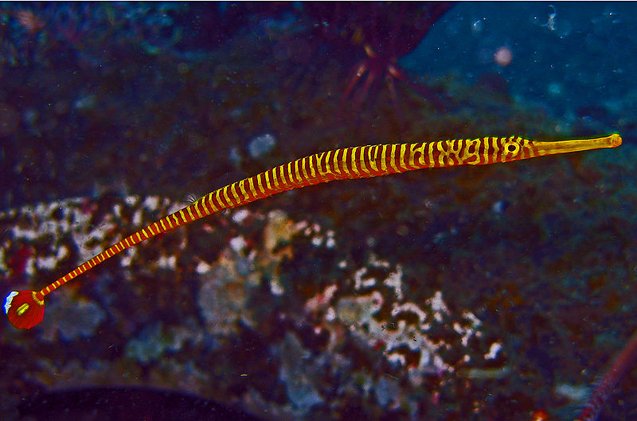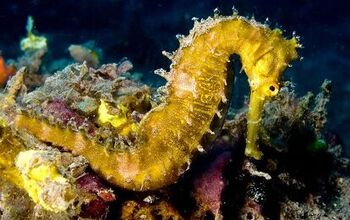Pipefish


About Pipefish
Pipefish are a curious species of saltwater fish closely related to seahorses. However, the pipefish’s body, unlike the seahorse’s, is long, straight and snake-like. It also gets its name from the shape of its mouth which is long and pipe-like. Pipefishes are an extremely slow swimming species of fish and only have a dorsal fin. This dorsal fin is their primary means of locomotion and the pipefish prefers to spend most of its time drifting gently with the currents.
Pipefish are a curious species of saltwater fish closely related to seahorses.
Pipefishes originate in the tropical, sub-tropical and temperate regions of most of the world’s oceans.
Most aquarium varieties of pipefishes are brightly colored and come in shades of red, orange, purple, green, brown and black.
Due to their weak swimming abilities, pipefishes are best housed in aquariums with slow water currents. They spend most of their time drifting about gently in the aquarium and appreciate generous amounts of rock and coral work in which to hide in. Although pipefish are a very peaceful species, it is recommended that they only be kept in a species tank or with species of seahorse. This is because these slow swimming fish can sometimes have a hard time competing for food with other faster tank mates. Pipefish can be kept in large groups and will often grab onto each other’s tails to form a pipefish ‘train.’ Seahorses too sometimes cling onto the pipefish’s tail and hitch rides, which can make for quite a comical sight in the aquarium.
Despite their fragile appearance, pipefishes are quite hardy and can thrive in a fairly wide range of aquarium conditions.
Due to their weak swimming abilities, pipefish are best housed in aquariums with slow water currents.
These fish can be fed on a diet of brine shrimp, ghost shrimp and various copepods and amphipods found in live rock.
Like seahorses, the pipefish’s spawning ritual consists of the female depositing her eggs in a small pouch located on the chest of the male pipefish. Once the eggs are deposited the male fertilizes them and carries them until they hatch.
Banded Pipefishes, Bluestripe Pipefishes, Dragonface Pipefishes, Janss’ Pipefishes, Yellow Multibanded Pipefishes, etc.
Photo credit: divemecressi/Flickr; Steve Childs/Flickr

Amy Tokic, Editor of PetGuide.com, is a passionate animal lover and proud pet parent of Oscar, a Shih Tzu/Chihuahua cross, and Zed, a Japanese Chin. Her love of animals began in kindergarten, when she brought her stuffed dog Snoopy into class with her every day. Now, she writes about her adventures in pet ownership and tirelessly researches products, news and health related issues she can share with other animal enthusiasts. In her free time, Amy loves perusing used book and record stores, obsessing over the latest pet products available and chasing squirrels with wild abandon (a habit attributed to spending too much time with her pooches).
More by Amy Tokic
























